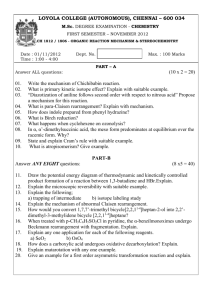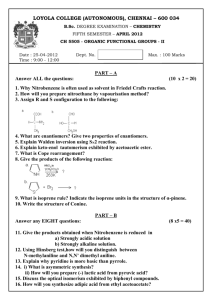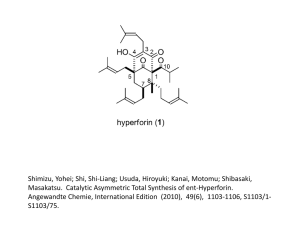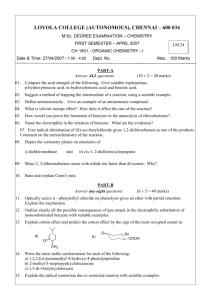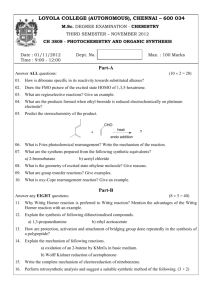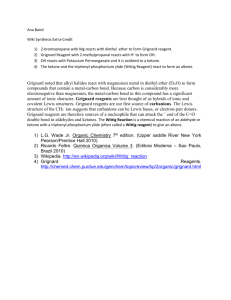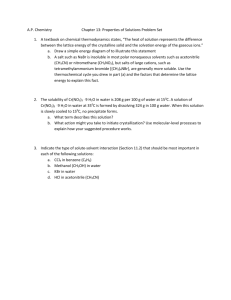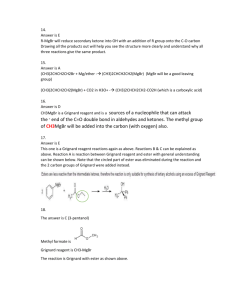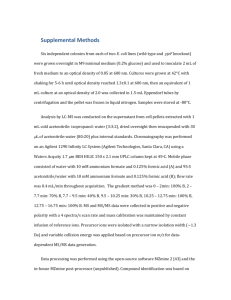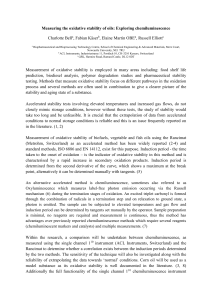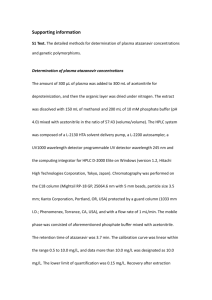(1-hydroxylalkyl)furan into 2-alkyl-3
advertisement
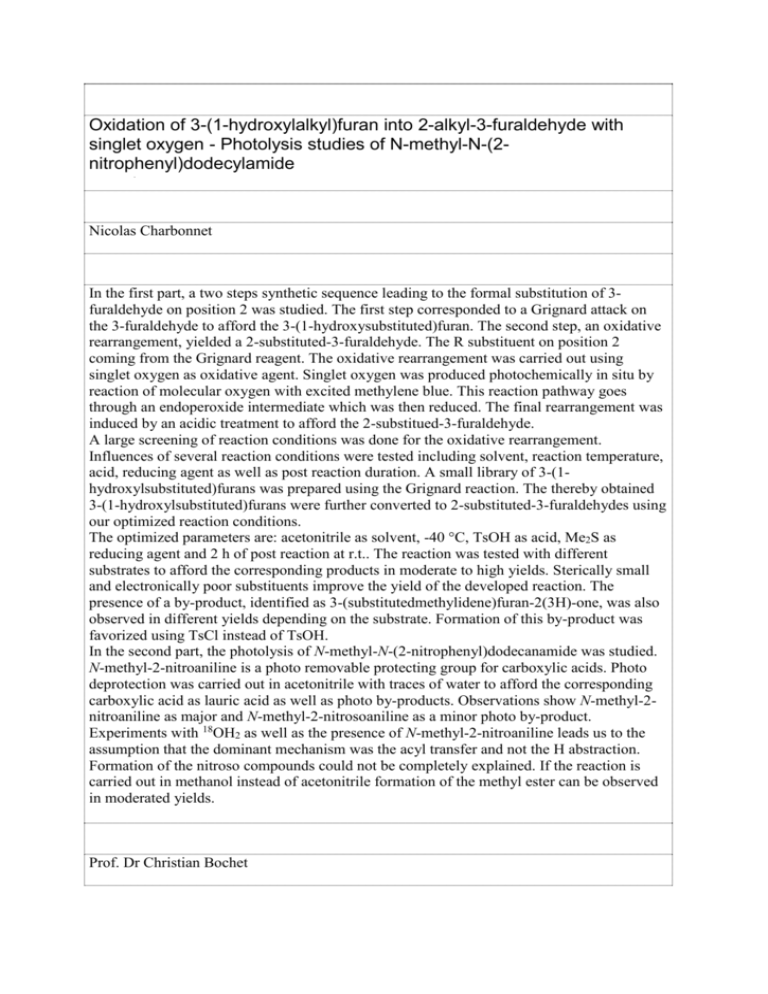
Oxidation of 3-(1-hydroxylalkyl)furan into 2-alkyl-3-furaldehyde with singlet oxygen - Photolysis studies of N-methyl-N-(2nitrophenyl)dodecylamide Nicolas Charbonnet In the first part, a two steps synthetic sequence leading to the formal substitution of 3furaldehyde on position 2 was studied. The first step corresponded to a Grignard attack on the 3-furaldehyde to afford the 3-(1-hydroxysubstituted)furan. The second step, an oxidative rearrangement, yielded a 2-substituted-3-furaldehyde. The R substituent on position 2 coming from the Grignard reagent. The oxidative rearrangement was carried out using singlet oxygen as oxidative agent. Singlet oxygen was produced photochemically in situ by reaction of molecular oxygen with excited methylene blue. This reaction pathway goes through an endoperoxide intermediate which was then reduced. The final rearrangement was induced by an acidic treatment to afford the 2-substitued-3-furaldehyde. A large screening of reaction conditions was done for the oxidative rearrangement. Influences of several reaction conditions were tested including solvent, reaction temperature, acid, reducing agent as well as post reaction duration. A small library of 3-(1hydroxylsubstituted)furans was prepared using the Grignard reaction. The thereby obtained 3-(1-hydroxylsubstituted)furans were further converted to 2-substituted-3-furaldehydes using our optimized reaction conditions. The optimized parameters are: acetonitrile as solvent, -40 °C, TsOH as acid, Me2S as reducing agent and 2 h of post reaction at r.t.. The reaction was tested with different substrates to afford the corresponding products in moderate to high yields. Sterically small and electronically poor substituents improve the yield of the developed reaction. The presence of a by-product, identified as 3-(substitutedmethylidene)furan-2(3H)-one, was also observed in different yields depending on the substrate. Formation of this by-product was favorized using TsCl instead of TsOH. In the second part, the photolysis of N-methyl-N-(2-nitrophenyl)dodecanamide was studied. N-methyl-2-nitroaniline is a photo removable protecting group for carboxylic acids. Photo deprotection was carried out in acetonitrile with traces of water to afford the corresponding carboxylic acid as lauric acid as well as photo by-products. Observations show N-methyl-2nitroaniline as major and N-methyl-2-nitrosoaniline as a minor photo by-product. Experiments with 18OH2 as well as the presence of N-methyl-2-nitroaniline leads us to the assumption that the dominant mechanism was the acyl transfer and not the H abstraction. Formation of the nitroso compounds could not be completely explained. If the reaction is carried out in methanol instead of acetonitrile formation of the methyl ester can be observed in moderated yields. Prof. Dr Christian Bochet
